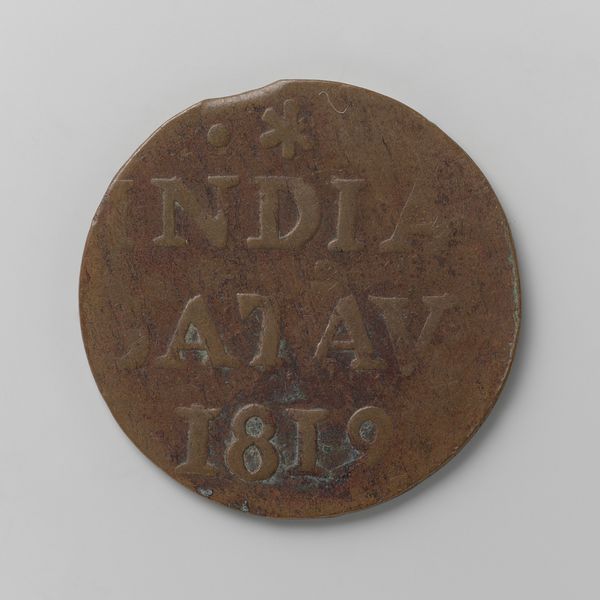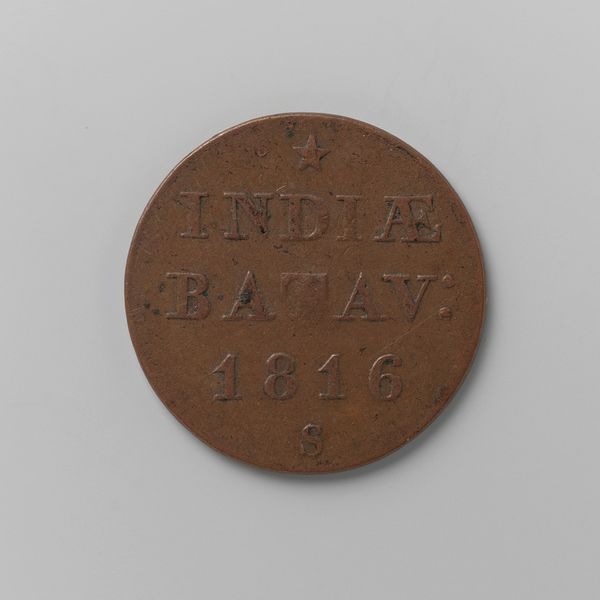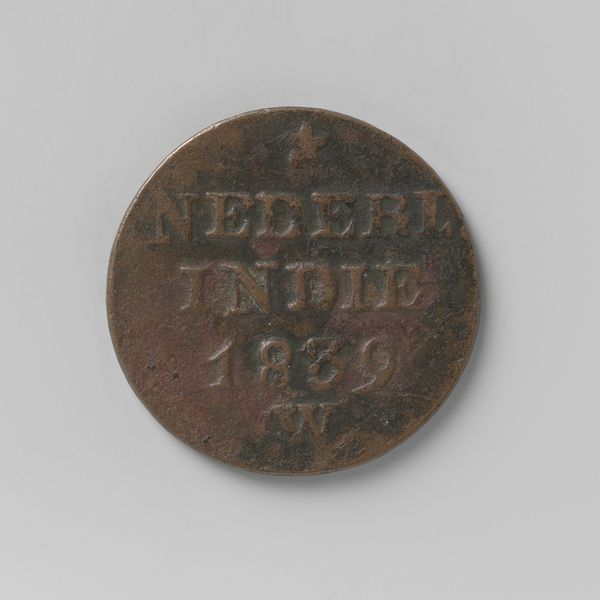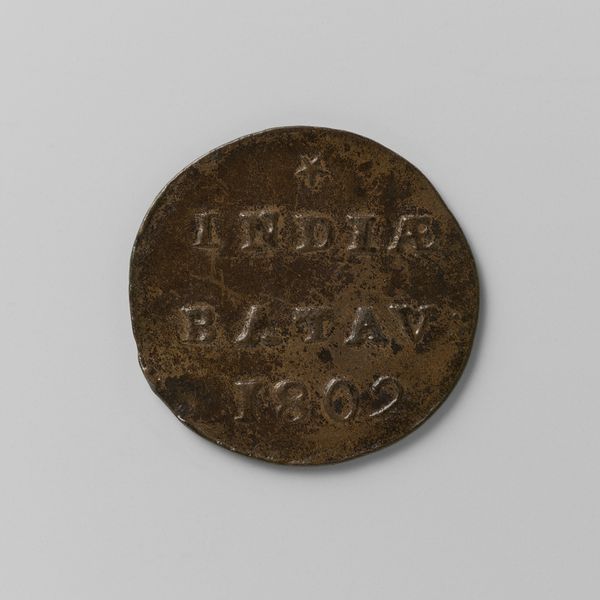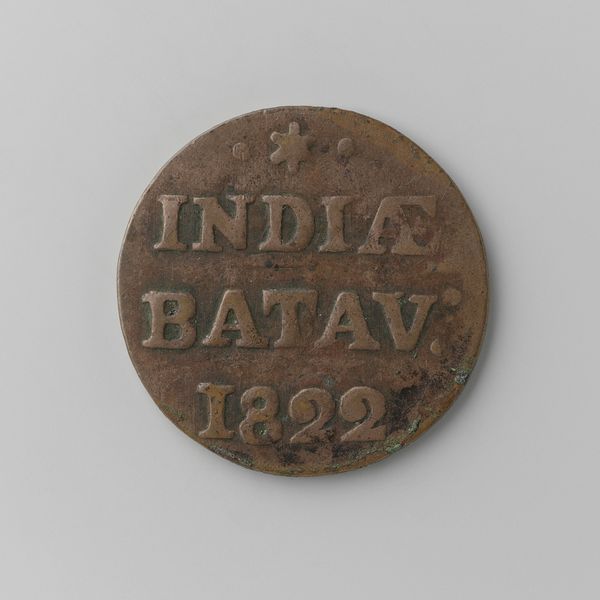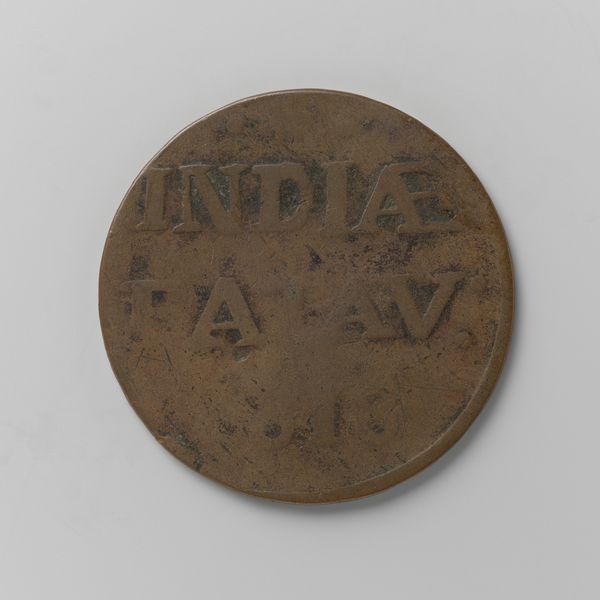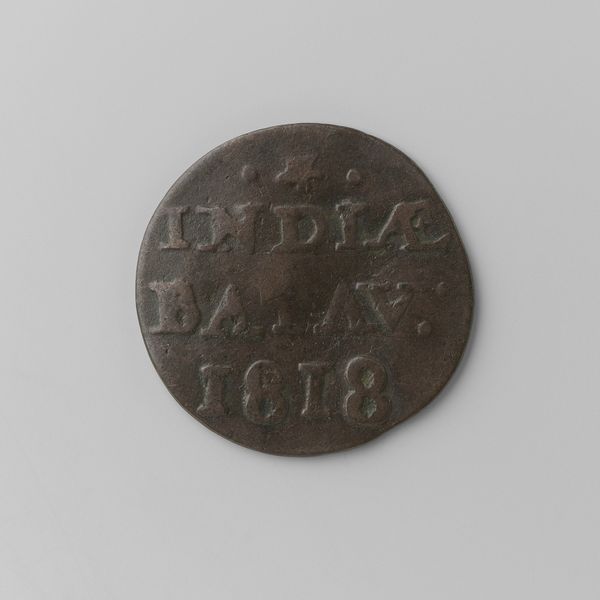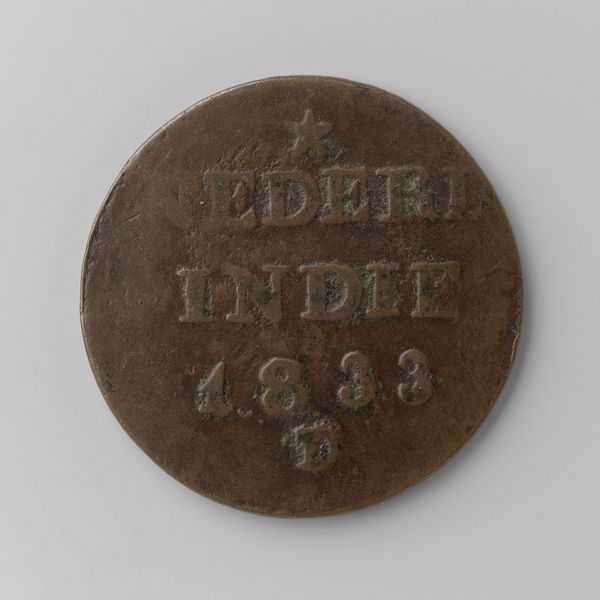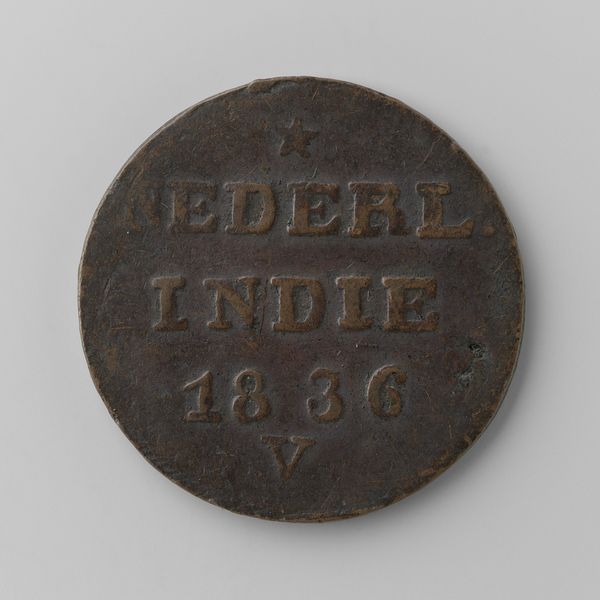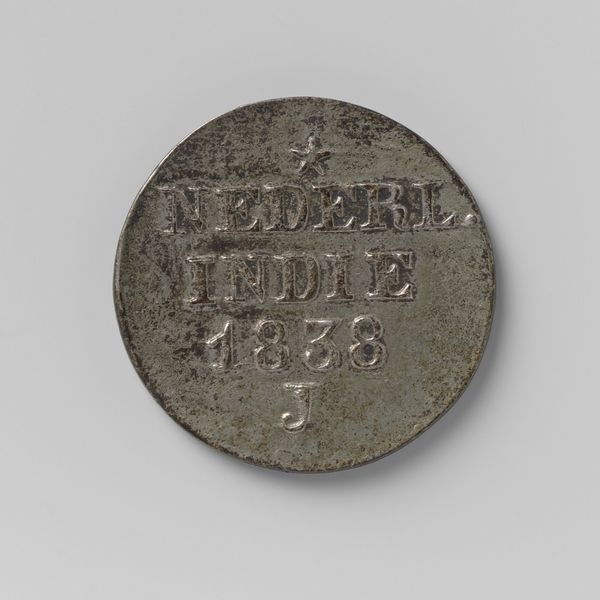
print, metal, photography, engraving
# print
#
metal
#
photography
#
embossed
#
islamic-art
#
engraving
Dimensions: diameter 2.2 cm, weight 2.88 gr
Copyright: Rijks Museum: Open Domain
Curator: Here we have a photograph of a coin, titled "Duit van Nederlands Indie, 1818," created in 1818. It is currently held in the collection of the Rijksmuseum. What strikes you initially about it? Editor: It feels strangely weighted, even as an image. The patina speaks of time and trade routes, empires rising and falling. I sense immense power concentrated in that small, circular form. Curator: Indeed. "Duit" refers to a former Dutch coin, and this particular example circulated in the colony of the Dutch East Indies, what we now know as Indonesia. It’s such a small object, but its creation is inherently linked with some pretty complicated global networks. Editor: Absolutely. Look at the central inscription: "Indiae Batav" — a clear proclamation of Dutch dominion over Indonesian resources, condensed into colonial-era nomenclature and permanently embossed in metal. That star-like mark above the words "Indiae Batav" almost reads as an asterisk; the Dutch were quite good at asterisking, er, and extracting wealth from colonised territories. Curator: Coins were absolutely instruments of power and propaganda. A quick, accessible method of reinforcing imperial dominance. Every transaction involving this coin acted as a constant reminder of the Dutch presence. Consider also the portrait—it's a representation of Willem I, King of the Netherlands. How would you interpret it, visually? Editor: That’s interesting; I immediately defaulted to focusing on the coin’s reverse! Looking at Willem’s profile, the artistic decisions about that portrayal reveal such fascinating propaganda strategies, reflecting this European ruler and the reach of his governance—legitimating rule so far from the colonizing state, through an emblem of daily exchange. Curator: A visual anchor for Dutch authority and legitimacy, precisely. It raises some stark questions. For example, who benefited most from the exchange this coin facilitated? Editor: It's a potent, if scaled-down, example of cultural encoding. These symbols would likely evoke very different meanings based on social position: for colonisers versus the colonised; for elites and subjugated groups. It begs interrogation on the different perspectives within this complex power dynamic. Curator: I completely agree. What the history of colonialism represents today in how the global economies took root through violence, but here is Willem's portrait, immortalized in an emblem. This simple coin becomes quite loaded when examined through the lens of social and postcolonial histories. Editor: Indeed. On one level, it is an engraved artifact from history. Yet the symbolism embodies an ideology whose material consequences demand critical reckoning. It serves as a valuable and important tool to analyze social systems and historical interpretations.
Comments
No comments
Be the first to comment and join the conversation on the ultimate creative platform.
